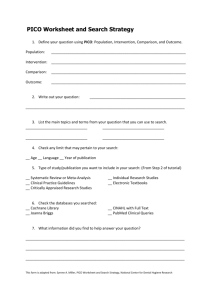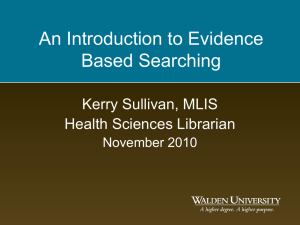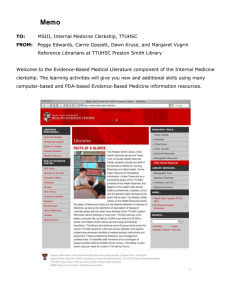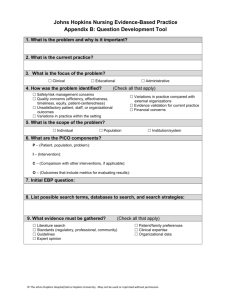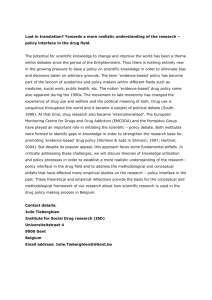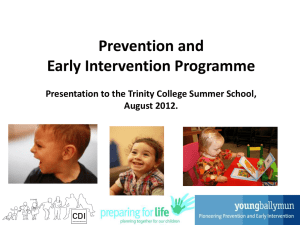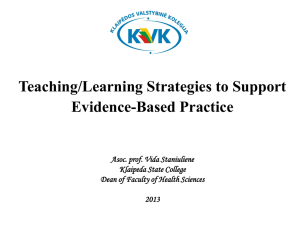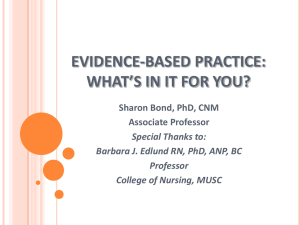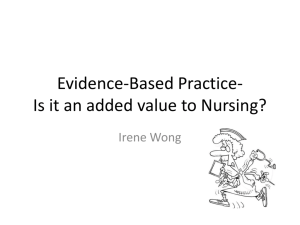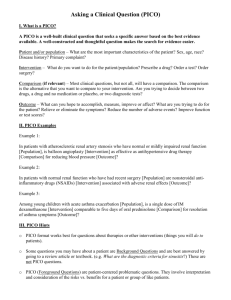An Introduction to Evidence-Based Practice for Beginners
advertisement
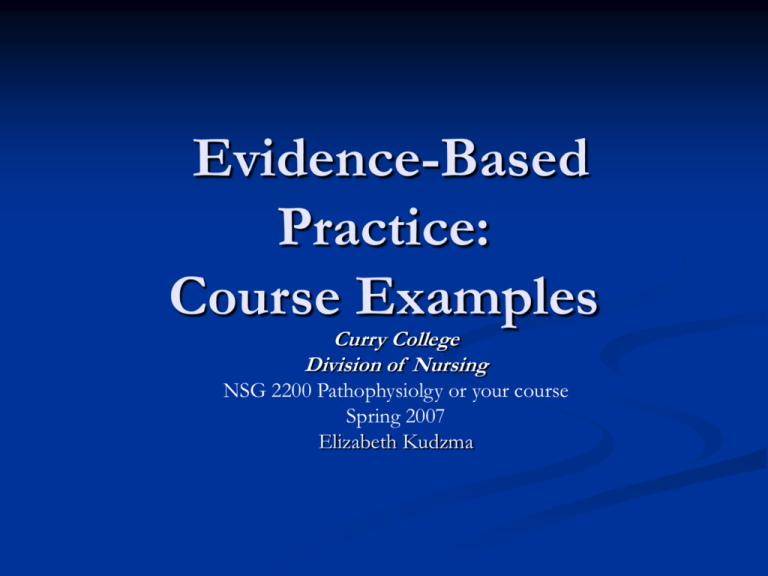
Evidence-Based Practice: Course Examples Curry College Division of Nursing NSG 2200 Pathophysiolgy or your course Spring 2007 Elizabeth Kudzma Evidence-Based Practice (EBP) Process by which health care providers know how to find, critically appraise, and use the best evidence Why Evidence-Based Practice (EBP) ?? Health care delivery is filled with uncertainty and many questions arise in every day practice… What kind of guidance would be most helpful to my patients? What clinical assessments and interventions are of the most benefit? Common questions that arise in everyday practice: Which combination and sequence of treatments is most effective? Which patient symptoms predict better or worse outcomes? What is the experience of illness for a patient with this diagnosis? Which treatment is most effective and will produce the best patient outcome? If a diagnosis is left untreated, what might be the outcome? Evidence to Support Best Practices is Constantly Changing Formulating the Clinical Question The “PICO” format is used to construct the clinical question specifically Using PICO format helps you find a needle in a hay stack of research information PICO Format Patient Population Intervention of Interest Comparison intervention or status Outcome Patient Population Consideration of the patient and population of interest Limit to age group or subgroup if possible Intervention Exposure Treatment Patient perception Diagnostic test Comparison Could be true control, such as placebo or doing nothing Could be another treatment Sometimes it is the usual standard of care Outcome Outcome may be very specific, e.g. death Outcome may be something that has a variety of measures, e.g. dehydration could be a measure, also tachycardia, dry mouth, fever, restlessness and irritability PICO format example Are 35 to 55 year-old women (p) who have high blood pressure (I) at increased risk for acute myocardial infarction (O) compared with women without hypertension (C) Rating System for Evidence Level I: evidence from systematic review, randomized control trials (RCTs), or evidence-based reviews Level II: evidence from one well-designed RCT Level III: evidence from well-designed studies without randomization Level IV: evidence from other types of studies including casecontrol and cohort studies Level V: evidence from systematic reviews of descriptive and qualitative studies Level VI: evidence from one descriptive or qualitative study Level VII: evidence from the opinion of authorities and/ or reports of expert committees Meynyk, B. & Fine-Overholt, E.. (2005). Evidence-Based Practice in Nursing and Healthcare. Lippincott, Wiliams & Wilkins. A Rating System for Looking at Evidence in Individual Studies Level A: Randomized control trial (RCT) Level B: (other evidence) Well-designed, nonrandomized trial Non-quantitative systematic review Lower quality RCT’s, clinical cohort studies, casecontrol studies High-quality historical, less controlled studies, welldesigned epidemiological studies Level C: consensus/expert opinion Siwek, J. et al. (2002). Am Fam Physician 65, 251-258. Searching for the Best Evidence: Searchable Databases CINAHL MEDLINE: (PubMed) National Guidelines Clearinghouse: http://www.guideline.gov Agency for Healthcare Research and Quality: www.ahrq.gov/clinic/cpgsix.htm National Institute of Nursing: http://ninr.nih.gov/ninr
